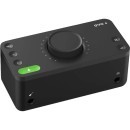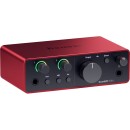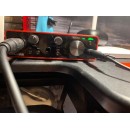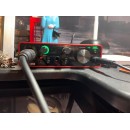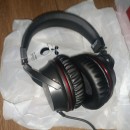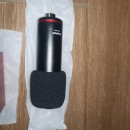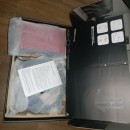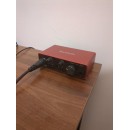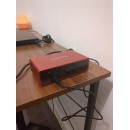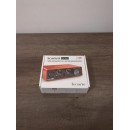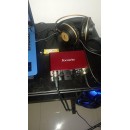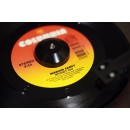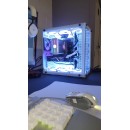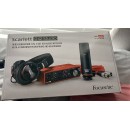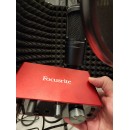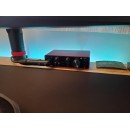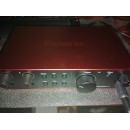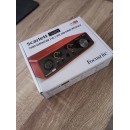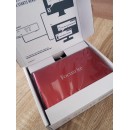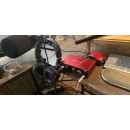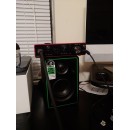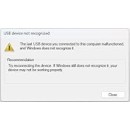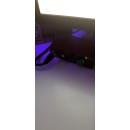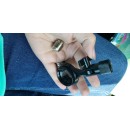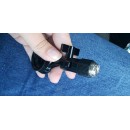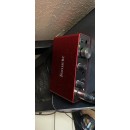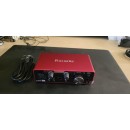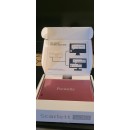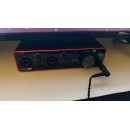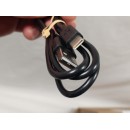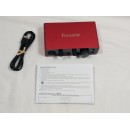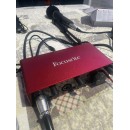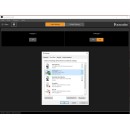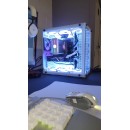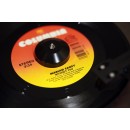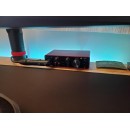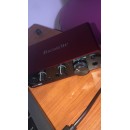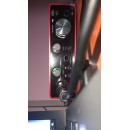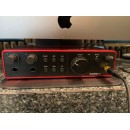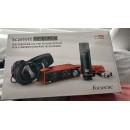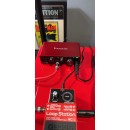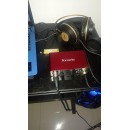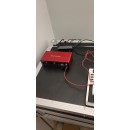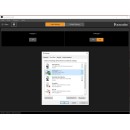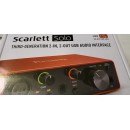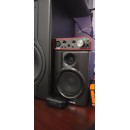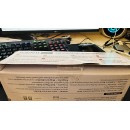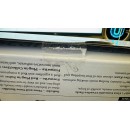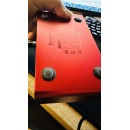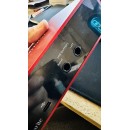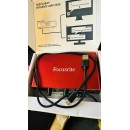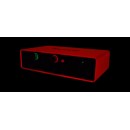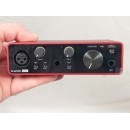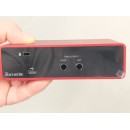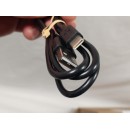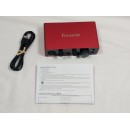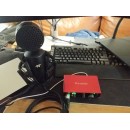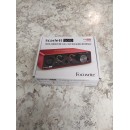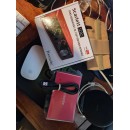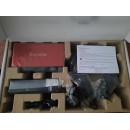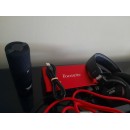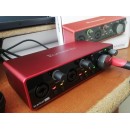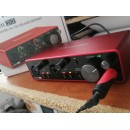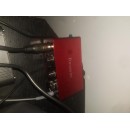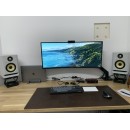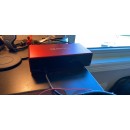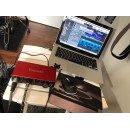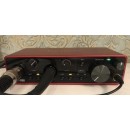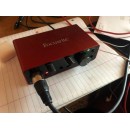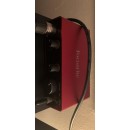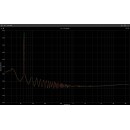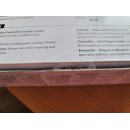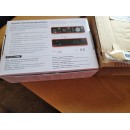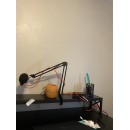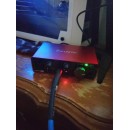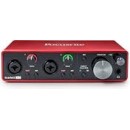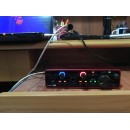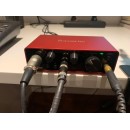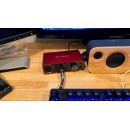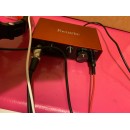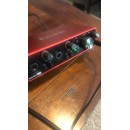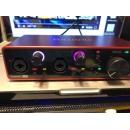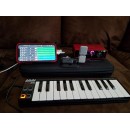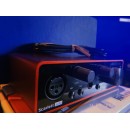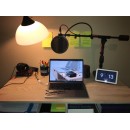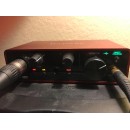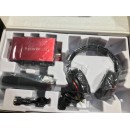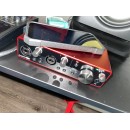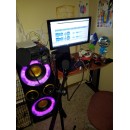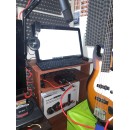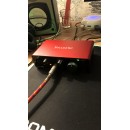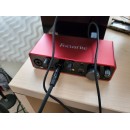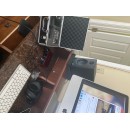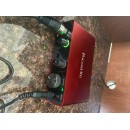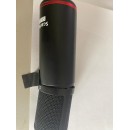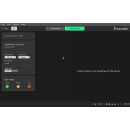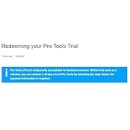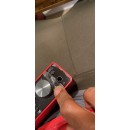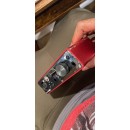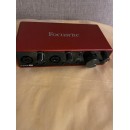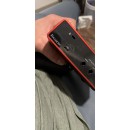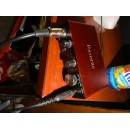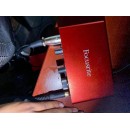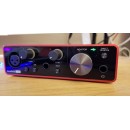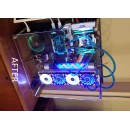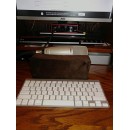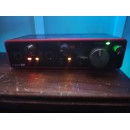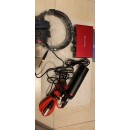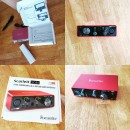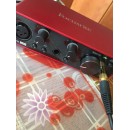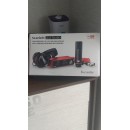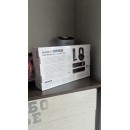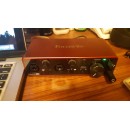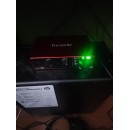Audient EVO 4 vs Focusrite Scarlett Solo (4th Gen): A Comprehensive Comparison
The Focusrite Scarlett Solo 4th Gen stands out with its exceptional preamps, offering ultra-low noise and high headroom, making it an excellent choice for musicians and home studio enthusiasts. Its two-input configuration includes a high-quality mic preamp with a switchable Air mode, which adds brightness and presence to recordings, and an instrument input designed to handle high-level pickups. This interface is known for its robust build quality, intuitive design, and seamless integration with popular DAWs, ensuring a smooth workflow for users. The Scarlett Solo also boasts 24-bit/192kHz converters, ensuring pristine audio quality, and it comes bundled with a comprehensive software package, including Ableton Live Lite and a suite of Focusrite’s plug-ins.
On the other hand, the Audient EVO 4 USB-C Audio Interface is celebrated for its innovative features and user-friendly design. One of its standout features is the Smartgain function, which automatically sets the appropriate gain levels for your inputs, removing the guesswork and ensuring optimal recording levels. The EVO 4 also includes two EVO mic preamps, renowned for their clean and transparent sound, and JFET instrument inputs that preserve the natural tone of your instruments. Additionally, the loopback functionality allows for easy capture of computer audio, making it ideal for podcasters and streamers. The EVO 4 supports 24-bit/96kHz audio resolution, providing excellent sound quality, and its compact, modern design makes it a versatile and portable option for creators on the go.
In summary, both the Focusrite Scarlett Solo 4th Gen and the Audient EVO 4 offer high-quality audio performance tailored to different user needs. The Scarlett Solo excels with its superior preamps and comprehensive software bundle, catering to musicians and home studio setups. Meanwhile, the EVO 4’s Smartgain feature, loopback functionality, and portable design make it a compelling choice for podcasters, streamers, and musicians looking for ease of use and versatility.
Specifications, Advantages, and Disadvantages of Audient EVO 4 and Focusrite Scarlett Solo (4th Gen)
| User Rating Based on Analysis of Reviews | |
|---|---|
|
Show More |
| Pros: | |
|---|---|
|
|
| Cons: | |
|---|---|
|
|
| Find Best Price | Find Best Price |
| Key Specs | |
|---|---|
| Channels of I/O | |
| Analog: 2 Inputs / 2 Outputs at 96 kHz |
Analog: 2 Inputs / 2 Outputs at 192 kHz |
| Maximum Sampling Rate | |
| 96 kHz / 24-Bit | 192 kHz / 24-Bit |
| Number of Microphone Inputs | |
| 2 Preamps | 1 |
| Analog Audio I/O | |
| 2x Combo XLR-1/4" TRS Balanced Mic/Line Input 1x 1/4" TS Unbalanced Hi-Z Input 2x 1/4" TRS Balanced Monitor Output 1x 1/4" TRS Unbalanced Headphone Output |
1x XLR 3-Pin Balanced Mic Input 1x 1/4" TS Unbalanced Line/Hi-Z Input (Front Panel) 2x 1/4" TRS Balanced Monitor Output 1x 1/4" TRS Headphone Output (Front Panel) |
| Host Connection | |
| 1x USB-C | 1x USB-C |
| OS Compatibility | |
| macOS 10.7.5 or Later Windows 7 or Later (32-/64-Bit) 6 or Later |
macOS Windows |
| Power Requirements | |
| USB Bus Power | USB Bus Power, USB Power Adapter (Not Included) |
The Focusrite Scarlett Solo (4th Generation) offers 2 analog input and 2 output channels at a maximum sampling rate of 192 kHz with a 24-bit resolution. It provides 1 XLR 3-pin balanced microphone input and 1 unbalanced 1/4" TS line/Hi-Z input on the front panel. Additionally, it features 2 balanced 1/4" TRS monitor outputs and a 1/4" TRS headphone output on the front panel. This model supports USB-C for its host connection and is compatible with macOS and Windows operating systems. Power is supplied via USB bus power, with an optional USB power adapter that is not included.
In contrast, the Audient EVO 4 USB-C Audio Interface provides 2 analog input and 2 output channels at a maximum sampling rate of 96 kHz and a 24-bit resolution. It includes 2 combo XLR-1/4" TRS balanced microphone/line inputs and an additional unbalanced 1/4" TS Hi-Z input. For outputs, the EVO 4 features 2 balanced 1/4" TRS monitor outputs and an unbalanced 1/4" TRS headphone output. This interface also uses USB-C for host connection and is compatible with macOS 10.7.5 or later as well as Windows 7 or later (32-/64-bit). Similar to the Scarlett Solo, it is powered via USB bus power.
In summary, the Focusrite Scarlett Solo offers a higher maximum sampling rate and includes a single XLR microphone input, making it suitable for solo artists or podcasters who need high-resolution audio. The Audient EVO 4, on the other hand, provides dual XLR-1/4" combo inputs, appealing to users who require more versatility in input options, albeit at a lower maximum sampling rate compared to the Scarlett Solo. Both interfaces are USB-C powered and compatible with both macOS and Windows, but the EVO 4 offers broader OS version compatibility.
| General | |
|---|---|
| Channels of I/O | |
| Analog: 2 Inputs / 2 Outputs at 96 kHz |
Analog: 2 Inputs / 2 Outputs at 192 kHz |
| Maximum Sampling Rate | |
| 96 kHz / 24-Bit | 192 kHz / 24-Bit |
| Number of Microphone Inputs | |
| 2 Preamps | 1 |
| Input Level Adjustment | |
| 2x Automatic 1x Knob |
2x Knob |
| Expansion Slots | |
The Focusrite Scarlett Solo (4th Generation) offers analog I/O channels with 2 inputs and 2 outputs, supporting a maximum sampling rate of 192 kHz at 24-bit resolution. It includes 1 microphone input and features 2 knobs for input level adjustment. This model does not include built-in DSP or a built-in microphone and lacks expansion slots. Its design focuses on providing high-quality audio with simple, manual control over input levels.
In comparison, the Audient EVO 4 USB-C Audio Interface also provides 2 analog I/O channels with 2 inputs and 2 outputs but supports a slightly lower maximum sampling rate of 96 kHz at 24-bit resolution. Unlike the Scarlett Solo, the EVO 4 comes with 2 microphone preamps and offers automatic input level adjustment in addition to a manual knob. This interface also does not include built-in DSP, a built-in microphone, or expansion slots. The automatic level adjustment feature on the EVO 4 can be particularly useful for users seeking ease of use and consistency in their recordings.
Both interfaces are designed to cater to different aspects of the recording process, with the Scarlett Solo emphasizing higher sampling rates and manual control, while the EVO 4 focuses on ease of use with automatic adjustments and additional microphone inputs.
| Signal Processing | |
|---|---|
| Gain/Trim Range | |
| Mic/Line/Hi-Z Inputs: 58 dB |
Mic/Line Inputs: Up to +69 dB Hi-Z Inputs: 62 dB |
The Focusrite Scarlett Solo's gain/trim range for mic/line inputs can go up to +69 dB, while its Hi-Z inputs offer a gain range of 62 dB. This high gain range makes it suitable for capturing a wide variety of sound sources with clarity. On the other hand, the Audient EVO 4 has a gain/trim range of 58 dB for its mic/line/Hi-Z inputs, which, while slightly lower than the Scarlett Solo, still provides ample headroom for many recording applications.
In terms of additional features, the Audient EVO 4 includes a mute function per input channel as well as a master mute, offering flexibility during live monitoring and recording sessions. This is a valuable feature for users who require quick muting capabilities. However, it lacks a pad and a high-pass filter, which might be a consideration for those looking for more advanced input control options.
Overall, the Focusrite Scarlett Solo stands out with its higher gain range, making it versatile for various recording environments, whereas the Audient EVO 4 offers useful mute functionality but with a slightly lower gain range and fewer input control features.
| Connectivity | |
|---|---|
| Analog Audio I/O | |
| 2x Combo XLR-1/4" TRS Balanced Mic/Line Input 1x 1/4" TS Unbalanced Hi-Z Input 2x 1/4" TRS Balanced Monitor Output 1x 1/4" TRS Unbalanced Headphone Output |
1x XLR 3-Pin Balanced Mic Input 1x 1/4" TS Unbalanced Line/Hi-Z Input (Front Panel) 2x 1/4" TRS Balanced Monitor Output 1x 1/4" TRS Headphone Output (Front Panel) |
| Phantom Power | |
| 48 V ± 4 V, Selectable On/Off (Selectable on Individual Inputs) | 48 V, Selectable On/Off |
| Digital Audio I/O | |
| Host Connection | |
| 1x USB-C | 1x USB-C |
| Host Connection Protocol | |
| USB 2.0 | USB 2.0 |
| USB (Non-Host) | |
| Sync I/O | |
| Network I/O | |
| MIDI I/O | |
The Focusrite Scarlett Solo (4th Generation) offers a streamlined analog audio I/O configuration with 1 XLR 3-pin balanced mic input, 1 unbalanced 1/4" TS line/Hi-Z input located on the front panel, 2 balanced 1/4" TRS monitor outputs, and a 1/4" TRS headphone output on the front panel. This setup is ideal for solo musicians or podcasters who require a straightforward and reliable input/output interface. The Scarlett Solo also provides 48V phantom power, which is selectable on or off, making it suitable for condenser microphones that require this feature. However, it does not support digital audio I/O, MIDI I/O, or wireless connectivity, focusing instead on simplicity and core analog functionality. The host connection is facilitated through a USB-C port, following the USB 2.0 protocol.
In contrast, the Audient EVO 4 offers a slightly more versatile analog audio I/O setup. It includes 2 combo XLR-1/4" TRS balanced mic/line inputs, which provide greater flexibility for different recording scenarios, alongside 1 unbalanced 1/4" TS Hi-Z input and 2 balanced 1/4" TRS monitor outputs. Additionally, it features a 1/4" TRS unbalanced headphone output. The EVO 4's phantom power is also selectable but can be activated individually on each input, allowing for more control over the connected devices. Like the Scarlett Solo, it does not include digital audio I/O, MIDI I/O, or wireless options but connects to the host via a USB-C port using the USB 2.0 protocol.
In summary, while both the Focusrite Scarlett Solo and the Audient EVO 4 offer robust USB-C connectivity and essential analog I/O features, the EVO 4 provides a bit more flexibility with its additional combo inputs and individual phantom power selection, catering to users who may need to connect multiple microphones or instruments simultaneously. The Scarlett Solo, on the other hand, is perfectly suited for solo artists or podcasters who prioritize a straightforward, high-quality input/output setup.
| Performance | |
|---|---|
| Frequency Response | |
| Mic Inputs: 10 Hz to 40 kHz ±0.5 dB Line, Hi-Z Inputs: 10 Hz to 20 kHz ±0.5 dB A/D Converters: 10 Hz to fs/2 ±0.5 dB D/A Converters: 10 Hz to fs/2 ±0.5 dB Headphone Outputs: 10 Hz to fs/2 ±0.5 dB |
XLR Mic Inputs: 20 Hz to 20 kHz ±0.06 dB 1/4" Line Inputs: 20 Hz to 20 kHz 0.05 dB 1/4" Hi-Z Inputs: 20 Hz to 20 kHz 0.15 dB |
| Maximum Input Level | |
| Mic Inputs: +16 dBu Hi-Z Inputs: +10 dBu |
XLR Mic: 9.5 dBu 1/4" Line: 22 dBu 1/4" Hi-Z: 12 dBu |
| Maximum Output Level | |
| D/A Converters: +11 dBu |
1/4" Line: +16 dBu |
| Headphone Output Power | |
| 45 mW into 30 Ohms (Max) 52 mW into 60 Ohms (Max) 20 mW into 600 Ohms (Max) |
1/4": 32 mW into 33 Ohms 22 mW into 300 Ohms |
| Impedance | |
| Mic Inputs: > 3 Kilohms (Balanced) Line Inputs: > 10 Kilohms (Balanced) Hi-Z Inputs: 1 Megohm (Unbalanced) |
XLR Mic Inputs: 3 Kilohms 1/4" Line Inputs: 60 Kilohms 1/4" Hi-Z Inputs: 1 Megohms 1/4" Line Outputs: 200 Ohms 1/4" Headphone Outputs: < 50 Ohm |
| Dynamic Range | |
| AD/DA Converters: 113 dBA |
XLR Mic Inputs: 113 dBA 1/4" Line Inputs: 113 dBA 1/4" Hi-Z Inputs: 112 dBA 1/4" Line Outputs: 120 dB 1/4" Headphone: 112 dB (at 33 Ohms) 115 dB (at 300 Ohms) Digital A/D Converters: 120 dB Digital D/A Converters: 130 dBA |
| THD+N | |
| A/D Converters: < 0.001% (1 kHz, at -1 dBFS) D/A Converters: < 0.0015% (1 kHz, at -1 dBFS) Headphone Outputs: < 0.0015% (1 kHz, at -1 dBFS) Hi-Z Inputs: < 0.3% (1 kHz) Mic/Line Inputs: < 0.0015% (1 kHz) |
XLR Mic Inputs: -100 dB (at Minimum Gain) 1/4" Line Inputs: -100 dB (at 8 dB Gain) 1/4" Hi-Z Inputs: -80 dB (at Minimum Gain) 1/4" Line Outputs: -100 dB (at Minimum Gain) 1/4" Headphone Outputs: -97 dB (at 33 Ohms) -102 dB (at 300 Ohms) Digital A/D Converters: -110 dB Digital D/A Converters: -115 dB |
| EIN | |
| Mic/Line Inputs: < -128 dB |
XLR Mic Inputs: -127 dBu A-Weighted |
The Focusrite Scarlett Solo boasts a frequency response of 20 Hz to 20 kHz with minimal deviation across its XLR mic, 1/4" line, and 1/4" Hi-Z inputs. It offers a maximum input level of 9.5 dBu for XLR mic, 22 dBu for line inputs, and 12 dBu for Hi-Z inputs. The maximum output level for its line outputs is +16 dBu. The headphone output power is rated at 32 mW into 33 Ohms and 22 mW into 300 Ohms. The impedance for the various inputs and outputs range from 3 Kilohms for XLR mic inputs to less than 50 Ohms for headphone outputs. The dynamic range is impressive with 113 dBA for both mic and line inputs, and 120 dB for line outputs. The THD+N values are low, ensuring minimal distortion, with -100 dB for XLR mic inputs at minimum gain and -102 dB for headphone outputs at 300 Ohms. The EIN for XLR mic inputs is -127 dBu A-Weighted, indicating low noise levels.
On the other hand, the Audient EVO 4 features a wider frequency response range for mic inputs, from 10 Hz to 40 kHz, and for line and Hi-Z inputs, from 10 Hz to 20 kHz, both with ±0.5 dB accuracy. The maximum input levels are higher compared to the Scarlett Solo, with +16 dBu for mic inputs and +10 dBu for Hi-Z inputs. The maximum output level from the D/A converters is +11 dBu. The headphone output power is significantly higher, with a peak of 45 mW into 30 Ohms and 52 mW into 60 Ohms. The impedance for mic inputs is greater than 3 Kilohms, and for line inputs, it is greater than 10 Kilohms. The dynamic range for the A/D and D/A converters is 113 dBA, matching the Scarlett Solo. The signal-to-noise ratio (SNR) for mic, line, and Hi-Z inputs is 100 dB, and the THD+N is extremely low at less than 0.001% for A/D converters and less than 0.0015% for D/A converters. The EIN for mic/line inputs is less than -128 dB, indicating very low noise performance, and the common-mode rejection ratio (CMRR) for mic/line inputs is greater than 85 dB.
In summary, both interfaces offer high-quality audio performance, but the Focusrite Scarlett Solo is known for its precise frequency response and dynamic range, while the Audient EVO 4 excels in providing a wider frequency response and higher headphone output power. The choice between the two would depend on specific needs such as higher input levels and lower noise performance versus consistent dynamic range and output levels.
| Digital Audio | |
|---|---|
| Sample Rates | |
| Up to 96 kHz | 44.1 / 48 / 88.2 / 96 / 176.4 / 192 kHz |
| Bit Depths | |
| Up to 24-Bit | 24-Bit |
| Sync Sources | |
| Internal | Internal |
The Focusrite Scarlett Solo USB-C Audio Interface (4th Generation) boasts an impressive range of sample rates, offering options at 44.1, 48, 88.2, 96, 176.4, and 192 kHz. This wide range provides flexibility for various recording scenarios, from standard CD quality to high-resolution audio. The bit depth is set at 24-bit, which is the industry standard for professional audio, ensuring high-quality sound recording and playback. The Scarlett Solo uses an internal sync source, which simplifies the setup and ensures stable operation without the need for external sync devices.
On the other hand, the Audient EVO 4 USB-C Audio Interface supports sample rates up to 96 kHz, which is sufficient for most recording needs, though it does not match the higher sample rates offered by the Scarlett Solo. It also supports up to 24-bit depth, maintaining professional audio quality. The EVO 4 features a specific dBFS reference level, with inputs at +8 dBu = 0 dBFS and outputs at +11 dBu = 0 dBFS, which provides clear information for gain staging and ensures optimal signal levels. Latency is another crucial factor where the EVO 4 provides detailed specifications: 5 ms at 44.1 kHz and 4.1 ms at 96 kHz, dependent on buffer size. This low latency makes it a reliable option for real-time recording and monitoring. Similar to the Scarlett Solo, the EVO 4 uses an internal sync source, ensuring stability and simplicity during operation.
In summary, the Focusrite Scarlett Solo (4th Generation) offers a broader range of sample rates and maintains high-quality 24-bit audio, making it suitable for various high-resolution recording needs. The Audient EVO 4, while capping at a 96 kHz sample rate, provides explicit latency details and a defined dBFS reference level, which may appeal to users who need precise control over their audio signals. Both interfaces ensure stable operation with internal sync sources, making them reliable choices for different recording environments.
| Audio Storage & Playback |
|---|
| Compatibility | |
|---|---|
| OS Compatibility | |
| macOS 10.7.5 or Later Windows 7 or Later (32-/64-Bit) 6 or Later |
macOS Windows |
The Focusrite Scarlett Solo is compatible with both macOS and Windows operating systems. Additionally, it supports mobile app compatibility exclusively with iPadOS, making it a versatile choice for users who wish to integrate it with their Apple tablets for mobile recording setups.
On the other hand, the Audient EVO 4 offers broader OS compatibility, supporting macOS 10.7.5 or later, Windows 7 or later (both 32-/64-bit), and even Linux. This makes it a more flexible option for users across different platforms. It also has specific processor requirements, needing at least an Intel processor for Mac or a 1.6 GHz Intel Core 2 or AMD processor for PC. The EVO 4 requires 1 GB of RAM and an available USB 2.0 port, which is quite standard. Additionally, an internet connection is necessary for registration and software/driver downloads, emphasizing the need for initial online setup and updates.
Both interfaces connect via USB-C, ensuring high-speed data transfer and reduced latency. However, the additional hardware requirements and the necessity for an internet connection for the Audient EVO 4 might be a consideration for users who prefer a more straightforward plug-and-play experience, which the Focusrite Scarlett Solo offers more readily.
| Power | |
|---|---|
| Power Requirements | |
| USB Bus Power | USB Bus Power, USB Power Adapter (Not Included) |
The Focusrite Scarlett Solo USB-C Audio Interface (4th Generation) is designed with versatile power options. It can be powered via USB bus power, which is convenient for users who need a portable and straightforward setup. Additionally, it supports a USB power adapter (not included) and an AC/DC power adapter providing 5 VDC at 900 mA. This flexibility allows users to choose the most suitable power source for their environment, whether they are in a studio or on the go. The power consumption of the Scarlett Solo is 4.5 W, indicating its efficiency in operation.
On the other hand, the Audient EVO 4 USB-C Audio Interface simplifies its power requirements by relying solely on USB bus power. This design choice makes the EVO 4 extremely portable and user-friendly, as it eliminates the need for additional power adapters and reduces the number of cables required. This can be particularly advantageous for musicians and producers who need a streamlined and efficient setup, whether they are working in a home studio or traveling.
In summary, the Focusrite Scarlett Solo offers flexibility with multiple power options, making it adaptable to various working conditions and preferences. The Audient EVO 4, however, emphasizes simplicity and portability with its reliance on USB bus power alone, catering to users who prioritize a minimalistic and hassle-free setup. Both interfaces are efficient in their power consumption, ensuring reliable performance for recording and producing audio.
| Physical | |
|---|---|
| Dimensions | |
| 5.51 x 2.64 x 2.64" / 14 x 6.71 x 6.71 cm | 5.63 x 3.78 x 1.79" / 14.3 x 9.6 x 4.55 cm |
| Weight | |
| 12.7 oz / 360.0 g | 0.8 lb / 363.0 g |
Starting with the dimensions, the Focusrite Scarlett Solo measures 5.63 x 3.78 x 1.79 inches (14.3 x 9.6 x 4.55 cm), which indicates a more rectangular and slightly flatter design. On the other hand, the Audient EVO 4 measures 5.51 x 2.64 x 2.64 inches (14 x 6.71 x 6.71 cm), making it more compact in terms of width and height but slightly taller in depth.
When comparing weights, the Focusrite Scarlett Solo weighs 0.8 lb (363.0 g), while the Audient EVO 4 is marginally lighter at 12.7 oz (360.0 g). This minor difference in weight might not be significant for most users, but it does show that the EVO 4 is slightly more lightweight.
In summary, the Focusrite Scarlett Solo is a bit larger in width and height but has a flatter profile compared to the Audient EVO 4, which is more compact but taller. Weight-wise, both interfaces are very close, with the EVO 4 being slightly lighter.
| Packaging Info | |
|---|---|
| Package Weight | |
| 1.29 lb | 1.305 lb |
| Box Dimensions (LxWxH) | |
| 6.8 x 3.85 x 3.55" | 7.2 x 6.1 x 2.5" |
The Focusrite Scarlett Solo 4th Generation has a package weight of 1.305 lb and its box dimensions measure 7.2 x 6.1 x 2.5". This compact and lightweight design makes it easy to transport, suitable for musicians and podcasters who need a reliable interface on the go. The slightly larger box could indicate a more extensive set of accessories or a different internal layout compared to its competitor.
On the other hand, the Audient EVO 4 has a package weight of 1.29 lb and its box dimensions are 6.8 x 3.85 x 3.55". The Audient EVO 4's packaging is marginally lighter and more compact, particularly in width and height, which might make it a bit more convenient for those with limited space in their gear bag. The box's design suggests a more streamlined approach to the interface's housing and accessories.
Both interfaces use USB-C connectivity, ensuring fast data transfer and compatibility with modern computing devices. The minor differences in weight and dimensions reflect subtle variations in design philosophy, with the Scarlett Solo being slightly heavier and broader, while the EVO 4 is more compact and potentially more space-efficient. Ultimately, the choice between these two interfaces may come down to personal preference regarding size and portability, as well as the specific feature sets and performance each interface offers.
| Customer Images | |
|---|---|
| Videos | |
|---|---|
|
|
|
